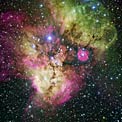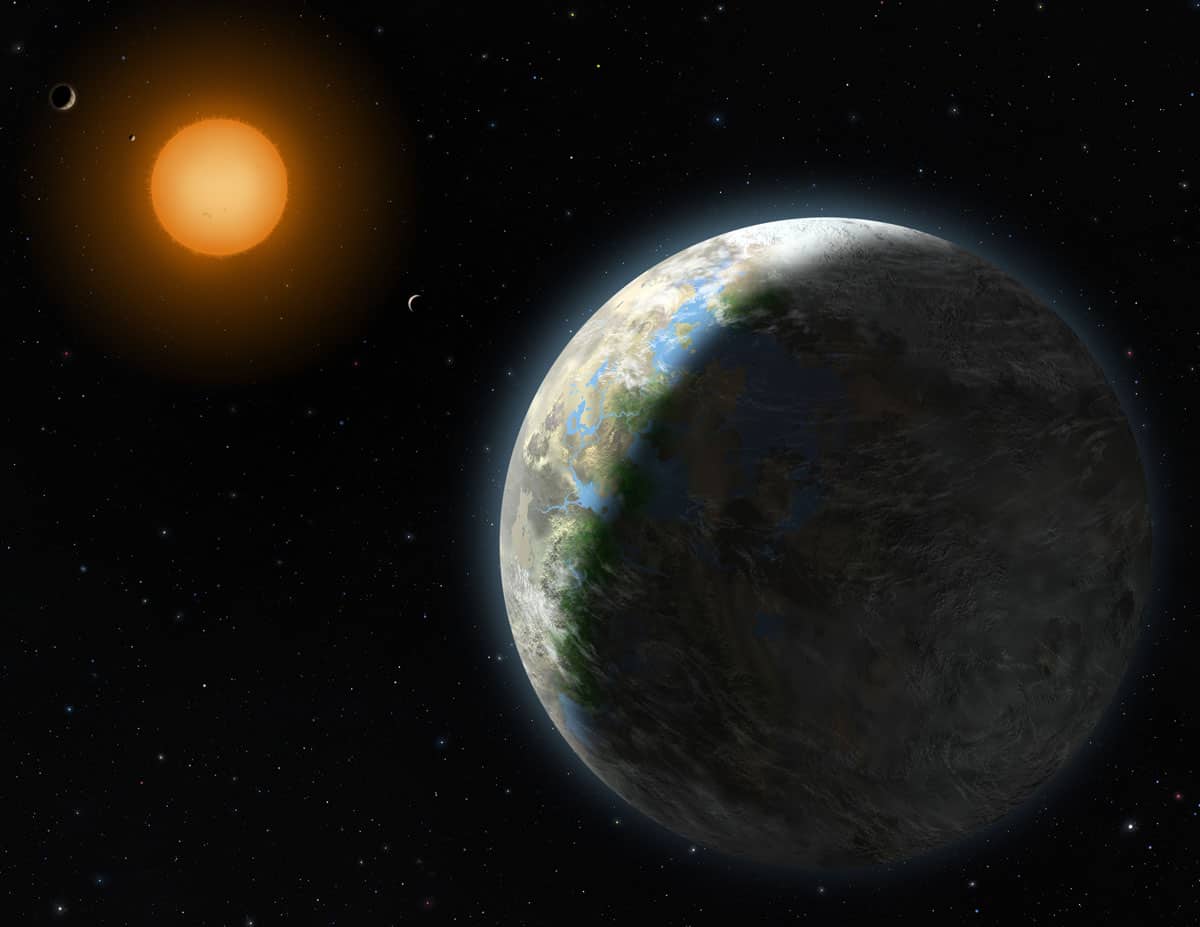
 Planet from Another Galaxy Discovered
Planet from Another Galaxy Discovered
An exoplanet orbiting a star that entered our Milky Way from another galaxy has been detected by a European team of astronomers using a 2.2-meter (87-inch) telescope at the La Silla Observatory in Chile. The Jupiter-like planet is quite unusual, as it is orbiting a star nearing the end of its life and could be about to be engulfed by it—giving tantalizing clues about the fate of our own planetary system in the distant future.
Over the last 15 years, astronomers have detected nearly 500 planets orbiting stars in our cosmic neighborhood, but none from outside our Milky Way has been confirmed. Now, however, a planet with a minimum mass of 1.25 times that of Jupiter has been discovered orbiting a star of extragalactic origin, even though the star now finds itself within our own galaxy. It is part of the so-called Helmi stream—a group of stars that originally belonged to a dwarf galaxy that was devoured by our galaxy, the Milky Way, in an act of galactic cannibalism about six to nine billion years ago. The discovery was announced Nov. 18 in Science Express.
“This discovery is very exciting,” says Rainer Klement of the Max-Planck-Institut fur Astronomie (MPIA), who was responsible for the selection of the target stars for this study. “For the first time, astronomers have detected a planetary system in a stellar stream of extragalactic origin. Because of the great distances involved, there are no confirmed detections of planets in other galaxies. But this cosmic merger has brought an extragalactic planet within our reach.”
The star is known as HIP 13044, and it lies about 2,000 light-years from Earth in the southern constellation of Fornax (the Furnace). The astronomers detected the planet, called HIP 13044 b, by looking for the tiny telltale wobbles of the star caused by the gravitational tug of an orbiting companion.
Adding to its claim to fame, HIP 13044 b is also one of the few exoplanets known to have survived the period when its host star expanded massively after exhausting the hydrogen fuel supply in its core—the “red giant” phase of stellar evolution. The star has now contracted again and is burning helium in its core.
“This discovery is part of a study where we are systematically searching for exoplanets that orbit stars nearing the end of their lives,” says Johny Setiawan, also from MPIA, who led the research. “This discovery is particularly intriguing when we consider the distant future of our own planetary system, as the Sun is also expected to become a red giant in about five billion years.”
HIP 13044 b is near to its host star. At the closest point in its elliptical orbit, it is less than one stellar diameter from the surface of the star (or 0.055 times the Sun-Earth distance). It completes an orbit in only 16.2 days.
The star poses interesting questions about how giant planets form, as it appears to contain very few elements heavier than hydrogen and helium—fewer than any other star known to host planets. “It is a puzzle for the widely accepted model of planet formation to explain how such a star, which contains hardly any heavy elements at all, could have formed a planet,” Setiawan says.
Images:
http://www.eso.org/public/images/esopia00046teles/
http://www.eso.org/public/news/eso1045/
You can contact Bob Eklund at [email protected], or visit his website at www.bobeklund.com.





Be the first to comment